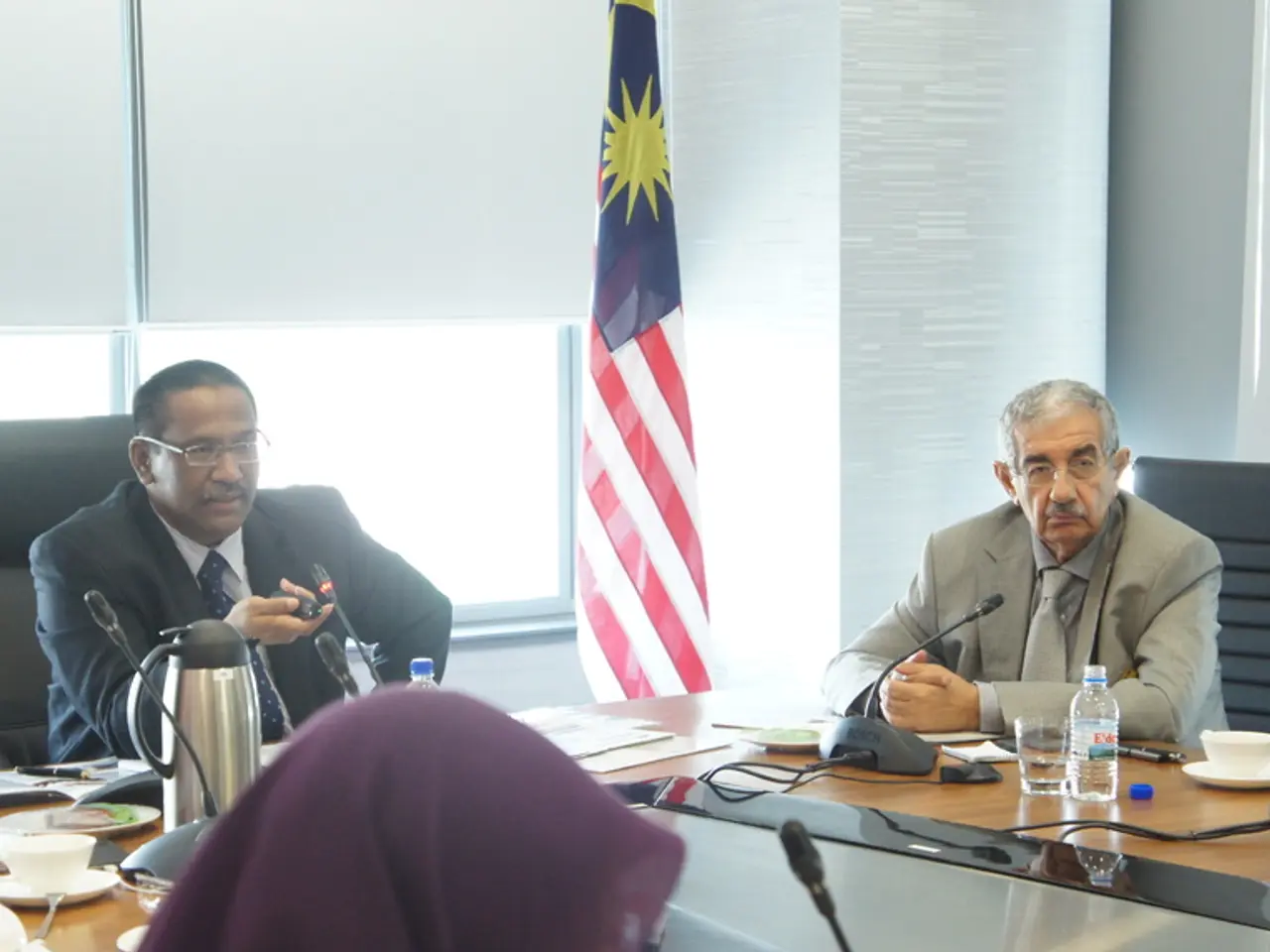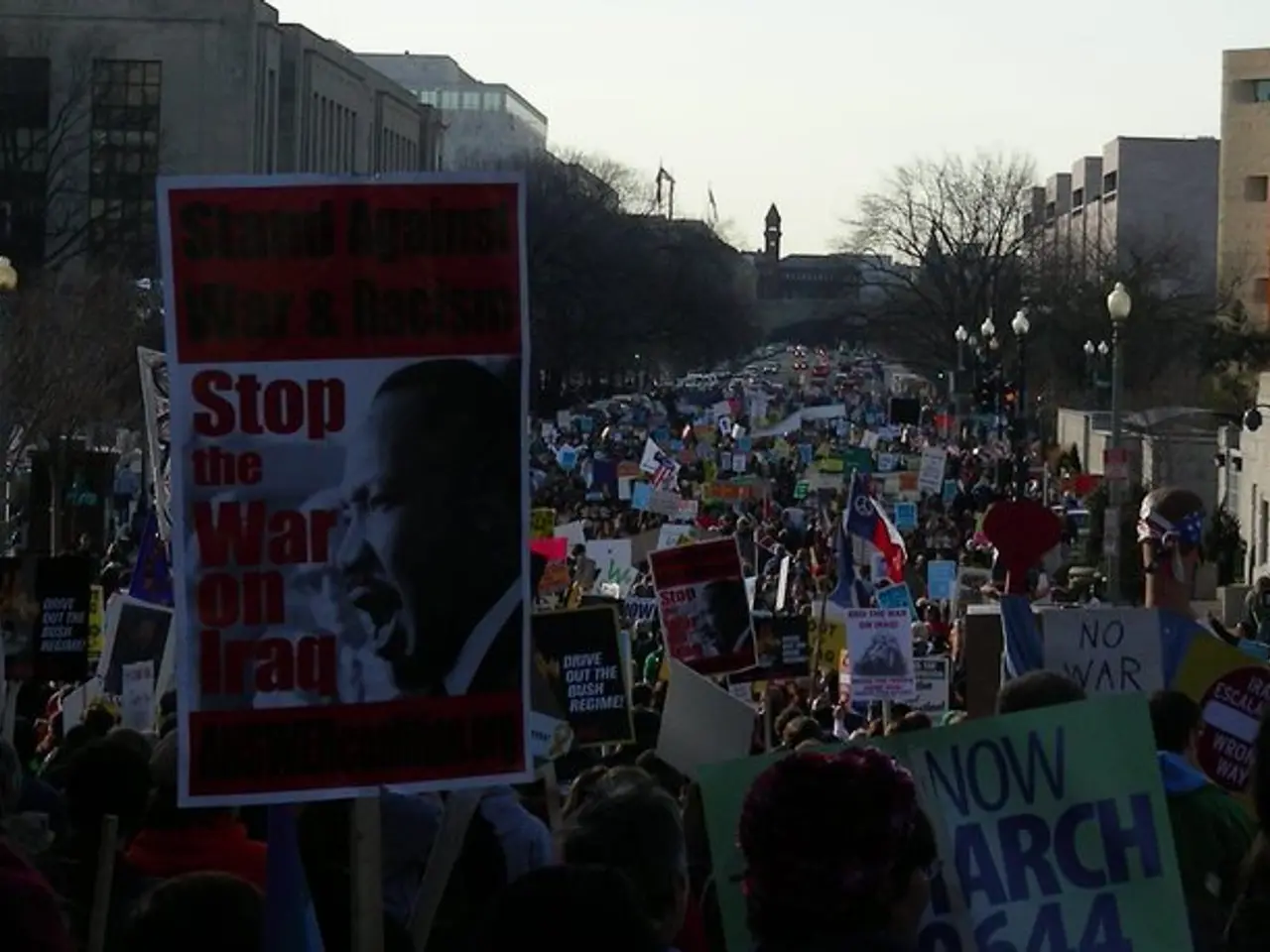Conflict Awaits Ahead, Tranquility Behind
In the global political landscape, two significant developments have caught the attention of the international community. Firstly, China's long-term revolutionary policy, rooted in Leninist theory and adapted to contemporary conditions, is aimed at consolidating the Chinese Communist Party's (CCP) dominance through socialist transformation. Secondly, the state of communist insurgency in America, while historically influenced by Maoist principles, remains marginal and fragmented.
China's revolutionary policy is a party-led socialist transformation that evolves Maoist doctrine to suit Chinese socio-political realities. The CCP's strategy involves adapting Marxist-Leninist-Maoist doctrines to Chinese conditions, including shifts towards a market economy and capitalist elements within a nominally socialist framework. This process, sometimes described as a "capitalist restoration," allows the party to maintain its imperial and ruling class dominance.
The CCP's strategy also includes continuous ideological struggle within the party to purify and strengthen the revolutionary line, a concept known as the "two-line struggle." This ideological conflict is essential in maintaining the party's revolutionary momentum domestically. The CCP's strategy also emphasizes a vanguard role, leading a proletarian revolution and overseeing the ongoing "two-line struggle" against revisionism.
Regarding the communist insurgency or revolutionary movements in America, Maoist-inspired groups have historically sought to emulate the CCP’s revolutionary model. However, the current state of communist insurgency in the United States is largely marginal and fragmented. American leftist groups, while influenced by the CCP, operate distinctly from the party's centralized long-term strategy. The CCP's emphasis remains on maintaining power in China rather than exporting a sustained armed communist insurgency abroad, especially in a context like the US where conditions differ starkly from early 20th-century China.
Recently, Xi Jinping told the Chinese military to prepare for war on 27 May 2020, but the target remains unclear, with potential targets including India, the US, or Taiwan. This development underscores the ongoing geopolitical tensions between China and its adversaries.
This synthesis draws primarily from analyses of Xi Zhongxun’s legacy and CCP strategies, historical accounts of Maoism’s influence on US leftist groups, and critical perspectives on China’s socio-economic evolution from Leninist theory. It is essential to monitor these developments closely as they could significantly impact the global political landscape.
References:
[1] Xu, Y. (2019). Xi Jinping and the Chinese Communist Party: The New Era of Chinese Politics. Oxford University Press.
[2] Chang, I.-F. (2005). Maoists in America: A History of the New Communist Movement. Columbia University Press.
[3] Walder, A. G. (1995). Communist Neo-Traditionalism: Politics and Ideology in Contemporary China. Cambridge University Press.
- The Chinese Communist Party (CCP) follows a long-term revolutionary policy, based on Leninist theory and adapted to contemporary conditions, to solidify its power through socialist transformation.
- The CCP's strategy includes integrating Marxist-Leninist-Maoist doctrines to Chinese socio-political realities, allowing for a capitalist restoration to maintain imperial and ruling class dominance.
- In the US, the state of communist insurgency is marginal and fragmented, different from the CCP’s centralized, long-term strategy, with American leftist groups influenced but distinct from the Chinese party.
- In May 2020, Xi Jinping ordered the Chinese military to prepare for war, with potential targets including India, the US, or Taiwan, adding to ongoing geopolitical tensions.
- Analyses of the CCP's strategies, Maoism's influence on US leftist groups, and Leninist theory's impact on China's socio-economic evolution are crucial for understanding the political developments.
- Regular monitoring of these developments is essential, as they have the potential to significantly impact the global political landscape, including war-and-conflicts and general news related to security, military, and international politics.







